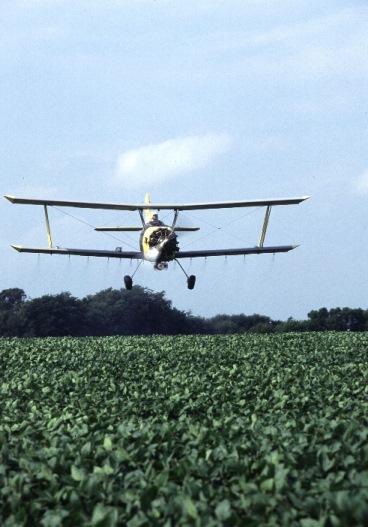Clean Water Fund: Contaminants of Emerging Concern (CEC)
MDH Legacy Initiatives
- Clean Water Fund Home
- Contaminants of
Emerging Concern - Groundwater Protection Initiative - Accelerated Implementation Grant
- Groundwater Restoration and Protection Strategies (GRAPS)
- Pathogen Project
- Private Well Protection
- Source Water Protection Planning and Grants
- Water Reuse
Related Topics
Environmental Health Division
Rapid Assessments for Pesticides
Project background

Pesticides are substances used to prevent, destroy, repel or mitigate pests. Pesticides can be applied to lawns, gardens, food crops, or bodies of water to reduce the impact of harmful insects, plants, animals, and microorganisms such as fungi and bacteria. Pesticides can be helpful in preventing crop damage and disease, but can be harmful to the environment and humans if used improperly.
Under certain conditions pesticides can move through soil into groundwater. Rainfall and wind carry pesticides into rivers and lakes. The Minnesota Department of Agriculture (MDA) monitors water and soil sources for the many pesticides used in Minnesota each year. MDA uses health based guidance values in order to determine if a sample has enough pesticides to pose a health risk. The Minnesota Department of Health (MDH) uses a chemical review process to create these guidance values, which tell us at what level a contaminant can be in drinking water and be unlikely to cause harm or illness. A full chemical review using MDH’s standard in-depth assessment methods can take months to complete for each pesticide. A more rapid assessment method allows MDH to prioritize pesticides that needed a more in-depth assessment. It would also allow MDA to focus on the pesticides that pose the greatest health risk. In 2013, MDH, with the help of MDA, identified a list of 159 pesticides, transformation products, and other agricultural-related chemicals to evaluate using a newly developed rapid assessment method. These chemicals either had no health based guidance or their guidance was outdated.
Project details
MDH developed a rapid method to assess the pesticides so we could process them in a reasonable amount of time. This method allowed us to assess many more pesticides than would otherwise be possible, and let us conduct our assessments in an efficient and transparent manner. We evaluated the pesticide’s ability to cause cancer and damage organs and used this data to determine the amount of pesticide in drinking water that is unlikely to cause harm to people. Rapid assessments generally produce more protective results than the guidance values MDH would produce in a full chemical review.
For more information, including the methodology and the rapid assessment results, read the Report on Pesticide Rapid Assessments, published December 2014.
The most current pesticide rapid assessment results are located in the Excel table below. This table includes any pesticide rapid assessment results added since the completion of the report in 2014 and does not include pesticides for which MDH has derived health-based guidance values.
Project applications
This project allows us to:
- Prioritize chemicals for full MDH reviews and monitoring
- Set clean-up goals for sites with high levels of pesticides
- Provide advice to the public on these chemicals
- Determine if groundwater monitoring methods are adequate for these pesticides.
Sharing the science
Screening and Assessment of pesticides is a topic of interest beyond MDH. MDH staff have shared the findings of this project with other interested parties through the report linked above, and also in a poster presentation on the Rapid Assessment for Pesticides project